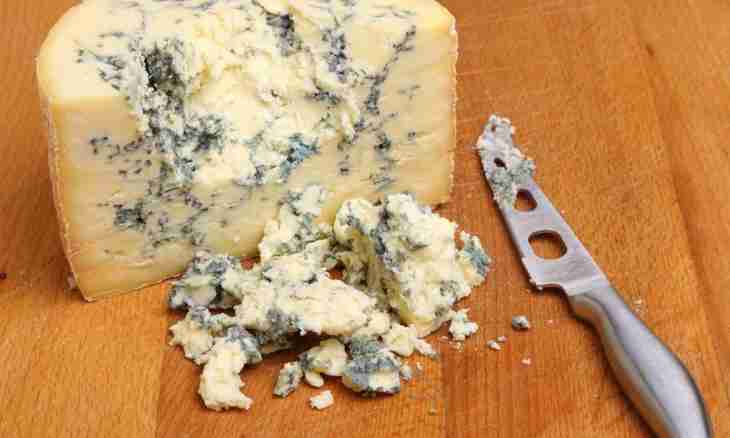Having made at least once cottage cheese of a grade "Stilton" of qualitative components and with respect for all prescription norms, you will forget about its analogs from shop. The taste is a little nut, slightly oily and spicy – will make the admirer of cheese with a blue mold even the person who is considering such grade too sharp and not understanding in what here "salt". "Stilton" - an ideal molded cheese for the beginning syroyed which will perfectly prepare you for tests of other, more difficult and intensive grades.
It is required to you
- Pan on 9 liters of milk, 8 liters of the milk, a special bag for a cheese curd and draining of serum, 1 liter of cream (optimum fat content – 20%), mesophilic ferment, a rennet, chloride calcium, the mouldy culture of Penisillium Roqueforti, a form for cheese on 1 kilogram, a cheese press, the thermometer, several spoons.
Instruction
1. Very first – prepare all necessary ingredients for grade cheese "Stilton". Make it at once that then it wasn't necessary to run on kitchen with hands in serum and not to spend precious minutes.
2. As "Stilton" is pressed, though under small oppression, give preference to a form with a cover and several to openings as it is the most convenient to work with it.
3. Such simplest cheese press it is possible to make with own hands only from two boards, four self-tapping screws and the same quantity of wooden sticks columns.
4. Pour out all milk and all cream in a pan. In the 9th liter capacity from a contents surface to a cover there has to be a space at least in several centimeters.
5. Heat milk to 30-31 degrees Celsius. This temperature is ideal for reproduction of a mouldy fungus and effect of mesophilic ferment.
6. After bringing milk to the necessary temperature add mesophilic ferment to a pan. Optimum amount of culture on 9 liters - about 1/8 tablespoons.
7. Add Penisillium Roqueforti mold to ferment. It, owing to big activity, 1/64 tablespoons are necessary very little, literally.
8. A big skimmer well and carefully, but slow and smooth movements mix pan contents. Don't try to do it quickly or even by the mixer. Similar actions will break structure of milk that, besides, will negatively affect flavoring properties of cheese. As a result ferment and Penisillium Roqueforti well and considerably will extend in milk and to its surfaces.
9. Pour into a glass a little water in which dilute carefully shaken up chloride calcium. The necessary amount of this ingredient - about 1/4 tablespoons. Well mix contents and pour in it in a pan.
10. The same actions that with chloride calcium, do with a rennet. Optimum quantity - about 1/8 tablespoons. If you face the choice - to what to buy enzyme, dry and sparkling or liquid - give preference to the second option as such ingredient best of all interacts with milk and affects its coagulability.
11. Once again carefully mix pan contents a skimmer. After that close milk a cover and leave to be curtailed approximately for 1.5 hours. If on the expiration of this time the contents were curtailed insufficiently, give to milk of 15-20 more minutes.
12. Knife all weight on cubes with the party in 1.5-2 centimeters.
13. Slightly mix cubes a skimmer. If excessively most parts come across to you, also cut them, cubes on a surface so far.
14. Now there comes, perhaps, the most boring stage of preparation of cheese - smooth and long stirring. It is necessary to do it in order that parts were condensed and emitted as much as possible serum. Time, optimum for stirring, - within 20-30 minutes.
15. Then again close a pan a cover that the cheese curd settled on a pan bottom. Time for this purpose - about 5 minutes. The first stage of preparation of cheese with a blue mold is finished.

